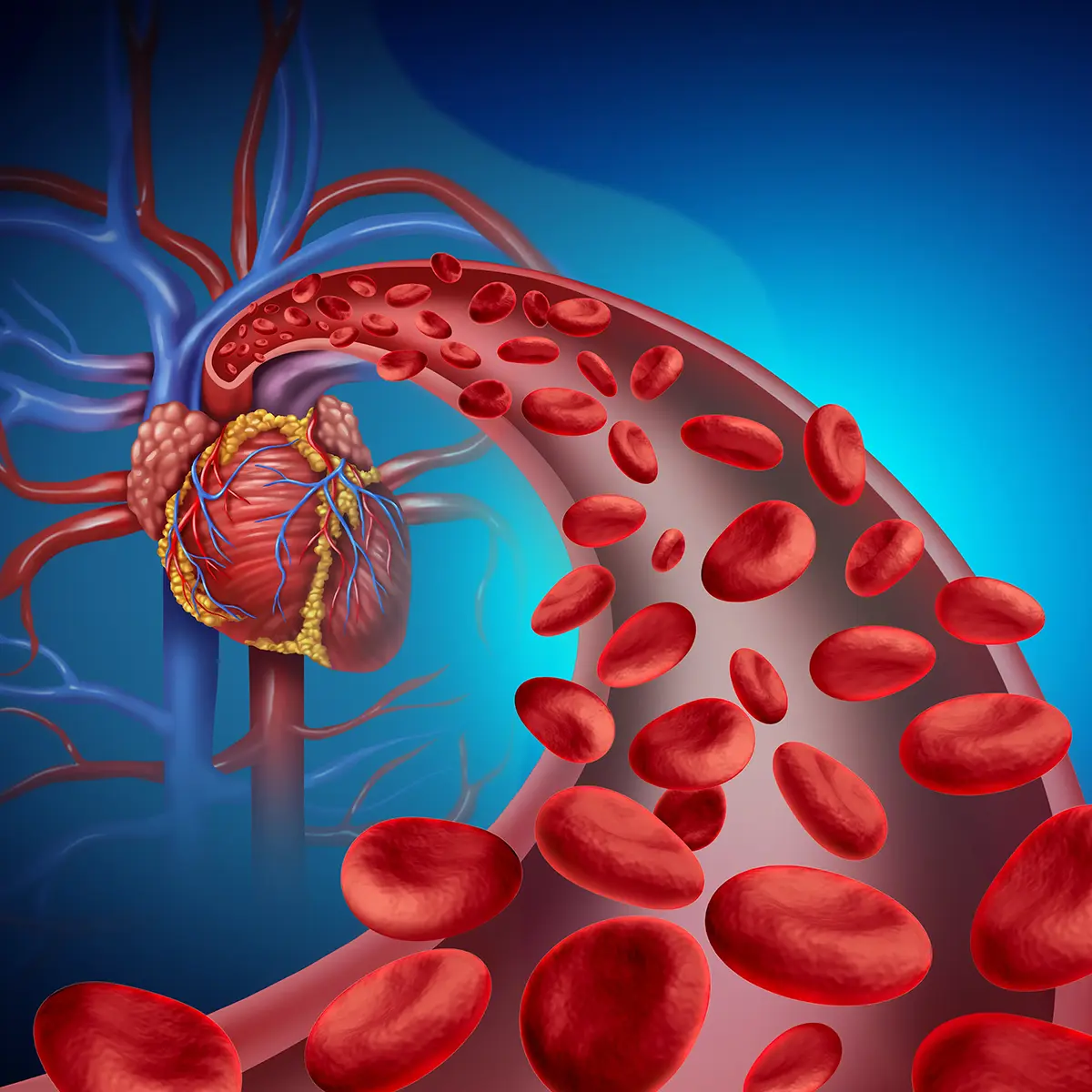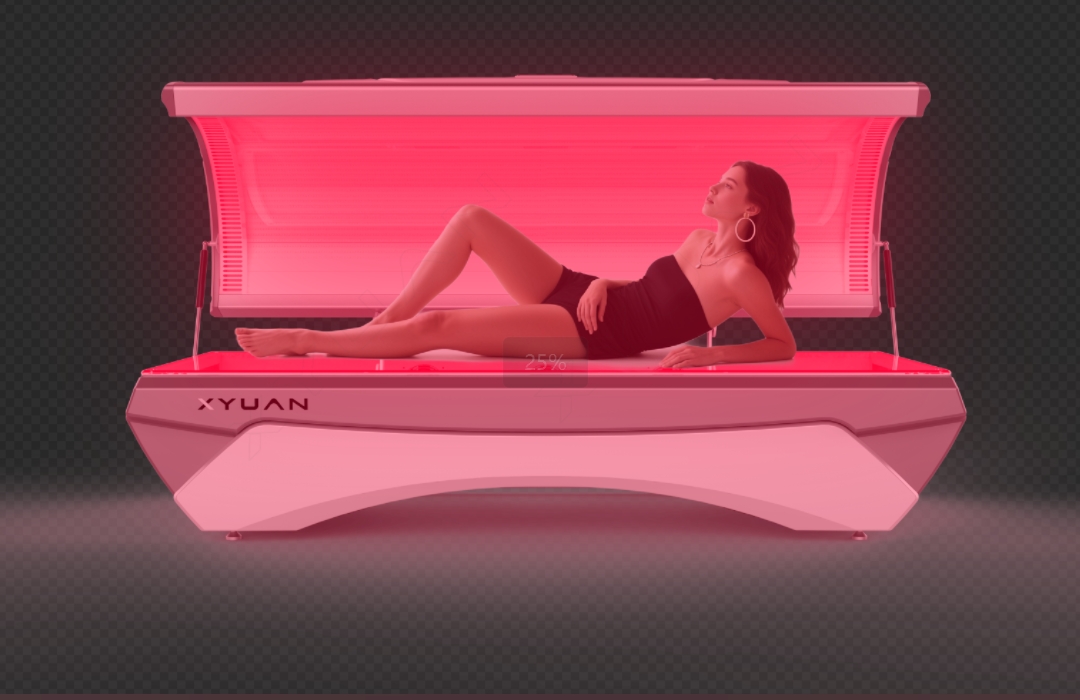Red Light Therapy and Blood Circulation System
Addtime:2025-06-23 Click:148

Red Light Therapy Bed X4 For Whole Body Blood Circulation improvement
Blood circulation is an essential physiological function for us to maintain a life. The total length of the blood vessels network in the human body is around 100,000 kilometers. Blood passes through the heart, arteries, and tiny blood vessels, from large to small, and is transported to the most peripheral tissues of the body, the places farthest from the heart, the hands, feet, and heads.
1. What is the Blood Circulation System and Why is it Important?

The two ‘roadways’ of the blood circulation system are the arteries and veins. Arteries carry blood away from the heart, and veins return blood back to the heart. The nourishment your cells receive from regular blood flow helps your body prevent disease, stabilize pH and temperature, and maintain homeostasis, or balance.
2. Circulation is Crucial for Healing and Processing Inflammation
Healthy blood circulation is vital for the body’s natural healing processes. The red blood cells transported to injuries via your circulatory system carry oxygen, which stimulates the creation of new blood vessels, helping to heal the damaged site. Poor, or restricted, blood flow can limit the body’s ability to heal from injuries, which can lead to chronic wound problems.
Blood circulation is also crucial for the body's natural inflammatory response. When our bodies are injured or infected, the circulatory system transports white blood cells to the damaged site. Part of the inflammatory response is the dilation of blood vessels so blood can flow more rapidly to the problem area.
 (1) Symptoms of Poor Blood Circulation
(1) Symptoms of Poor Blood CirculationIt is most common to experience the symptoms of poor circulation in your extremities, like your arms or legs. The most common symptoms related to poor circulation are sensations like tingling, numbness, throbbing, or stinging in your limbs. Pain or muscle cramps can also be a sign of poor circulation. In some men, erectile dysfunction symptoms can also be caused by diminished blood flow.
(2) What Causes Poor Blood Circulation?
Poor blood circulation is not a specific medical condition by itself, but it’s a common side effect of numerous other medical conditions, like obesity, diabetes, heart conditions, peripheral artery disease, atherosclerosis, and blood clots. Over time, smoking cigarettes and sedentary lifestyle can also weaken circulation. To improve circulation, a person ultimately needs to address the underlying causes of weakened blood flow, not just the symptoms.
Here’s a look at some of the most common reasons people start experiencing diminished circulation:
A: Atherosclerosis:
Atherosclerosis is the formation of fatty plaques in the arteries, which makes the passage of blood more difficult. These plaques are known as atheroma and build up slowly on the inside of the arteries. In the early stages, arteries may compensate the plaque buildup by dilating themselves in an attempt to preserve blood flow. Eventually, the artery cannot dilate any further, and the atherosclerotic plaque starts to narrow the arterial lumen. The restricted arterial blood flow results in the delivery of less overall blood to your organs and muscles, depriving them of the oxygen and nutrients they need. This can diminish your body’s performance across the board.
B: Diabetes:
One of the many complications from diabetes is poor circulation. Diabetes can cause blood vessels in your feet and legs to narrow and harden. It also increases your risk for peripheral artery disease and atherosclerosis. People with diabetes also have a much higher chance of lower limb amputation than those without diabetes, in large part due to circulation complications and overlapping conditions.
C: Blood Clots:
Blood clotting, or coagulation, is an important process that prevents excessive bleeding when a blood vessel is injured. After the injury has healed, your body will naturally dissolve the blood clot without a problem. However, some clots can be formed on the inside of vessels without an obvious injury. These situations can be dangerous, since an abnormal clot that forms in a vein may restrict the return of blood to the heart, resulting in pain and swelling. A severe condition is deep vein thrombosis (DVT), which is a type of clot that forms in a major vein of the leg or, less commonly, in the arms, pelvis, or other large veins in the body. In some cases, a clot in a vein may detach from its point of origin and travel through the heart to the lungs, where it becomes wedged, preventing adequate blood flow. This is called a pulmonary embolism and can be extremely dangerous.
Like diet and exercise, circulation is a lifelong health priority. These are a few common practices that can help keep your blood flowing and support a balanced circulatory system:
(1): Daily Exercise:
Moving your body helps get your blood flowing. Activities that increase heart rate will help your body pump and circulate blood, and getting exercise every day will help ward off some of the conditions mentioned above. That doesn’t mean you need to go to the gym or put in a big workout on a daily basis. Expand your idea of exercise to include routine movement: taking walks and doing yard work or housework are great ways to get on your feet and get your heart moving. It all starts with getting out of the chair and moving those legs! You can read more about how light supports better exercise, performance, and recovery here.
(2): Less Alcohol & Tobacco:
Cutting back on alcohol and tobacco is a great way to improve many areas of your health, including your circulation. Nicotine use alone is one of the leading causes of circulation and arterial problems, and it negatively affects your heart, lungs, and nearly every other organ.
(3): Less Stress:
Reducing stress levels is easier said than done, but if you can take steps to balance your mental health, your circulatory system and heart can benefit too . Chronic anxiety and anger can have a negative effect on your heart rate and throw your circulatory system out of whack. Finding practical ways to limit your stress levels can have widespread health benefits.
(4): Healthy Posture:
How you carry your body affects your circulation too. Proper posture allows your circulatory system to work unrestricted. This goes beyond slouching and excess sitting, to how you stand, and even the way your feet are positioned. Every aspect of your body’s alignment affects how your blood flows. Think about a garden hose as an analogy: if the hose is full of bends and kinks, the water will flow out at a slower pace. If the hose is straight, water flow will be optimal.
(5). Promote Circulation with Light Therapy
Red light therapy treatments are part of a healthy, balanced lifestyle, and can help support enhanced cellular function. Combined with exercise, nutritious eating, and restful sleep, healthy light intake can have a big impact on improving your circulation.
4. Red Light Therapy and Circulation:

(1). Enhanced Muscle Recovery and Performance
For athletes and fitness enthusiasts, better blood circulation means quicker delivery of oxygen and nutrients to muscles, leading to faster recovery and improved performance. Red light therapy can help reduce muscle soreness and enhance overall athletic performance.
(2). Improved Skin Health
Better blood flow means more oxygen and nutrients are delivered to the skin. This can result in a healthier complexion, reduced appearance of wrinkles, and faster healing of wounds and scars. Red light therapy can also help in managing skin conditions like acne and psoriasis by improving circulation and reducing inflammation.
(3). Alleviation of Pain and Discomfort
Conditions like arthritis and chronic pain can be alleviated through improved blood circulation. Red light therapy helps reduce inflammation and promote healing, offering relief from pain and discomfort associated with poor circulation.
(4). Boosted Immune Function
Enhanced blood circulation supports the immune system by ensuring that immune cells are efficiently transported throughout the body. This can help the body respond more effectively to infections and illnesses.
(5). Better Cognitive Function
Improved blood flow to the brain can enhance cognitive functions such as memory, focus, and overall mental clarity. Red light therapy has been studied for its potential to support brain health and reduce symptoms of cognitive decline.
5.Tips About Red Light Therapy in Practical Applications and Integration

Integrating red light therapy into your daily routine can be straightforward and highly beneficial. Here are some practical tips:
(1). Consistent Usage
Consistency is key when it comes to red light therapy. Aim for regular sessions, typically ranging from 15 to 25 minutes, several times a week. This regularity will help you experience the full benefits of improved blood circulation.
(2). Whole Body Red Light Therapy
Blood passes through the heart, arteries, and tiny blood vessels, from large to small, and is transported to the most peripheral tissues of the body, the places farthest from the heart, the hands, feet, and heads. They are one.
(3). Complement with Other Therapies
Combining red light therapy with other treatments, such as massage or physical therapy, can amplify the benefits. Enhanced blood flow from red light therapy can improve the effectiveness of these complementary therapies.
(4). Hydration and Nutrition
Supporting your body with adequate hydration and proper nutrition can enhance the effects of red light therapy. Staying hydrated and consuming a balanced diet rich in vitamins and minerals will support overall circulation and amplify the therapy’s benefits.
6. Scientific Support and Research
Numerous studies have highlighted the benefits of red light therapy for improving blood circulation. Research has demonstrated its effectiveness in promoting vasodilation, enhancing nitric oxide production, and improving overall vascular health. These findings provide a solid foundation for the use of red light therapy as a reliable method for boosting circulation and supporting various health benefits.
